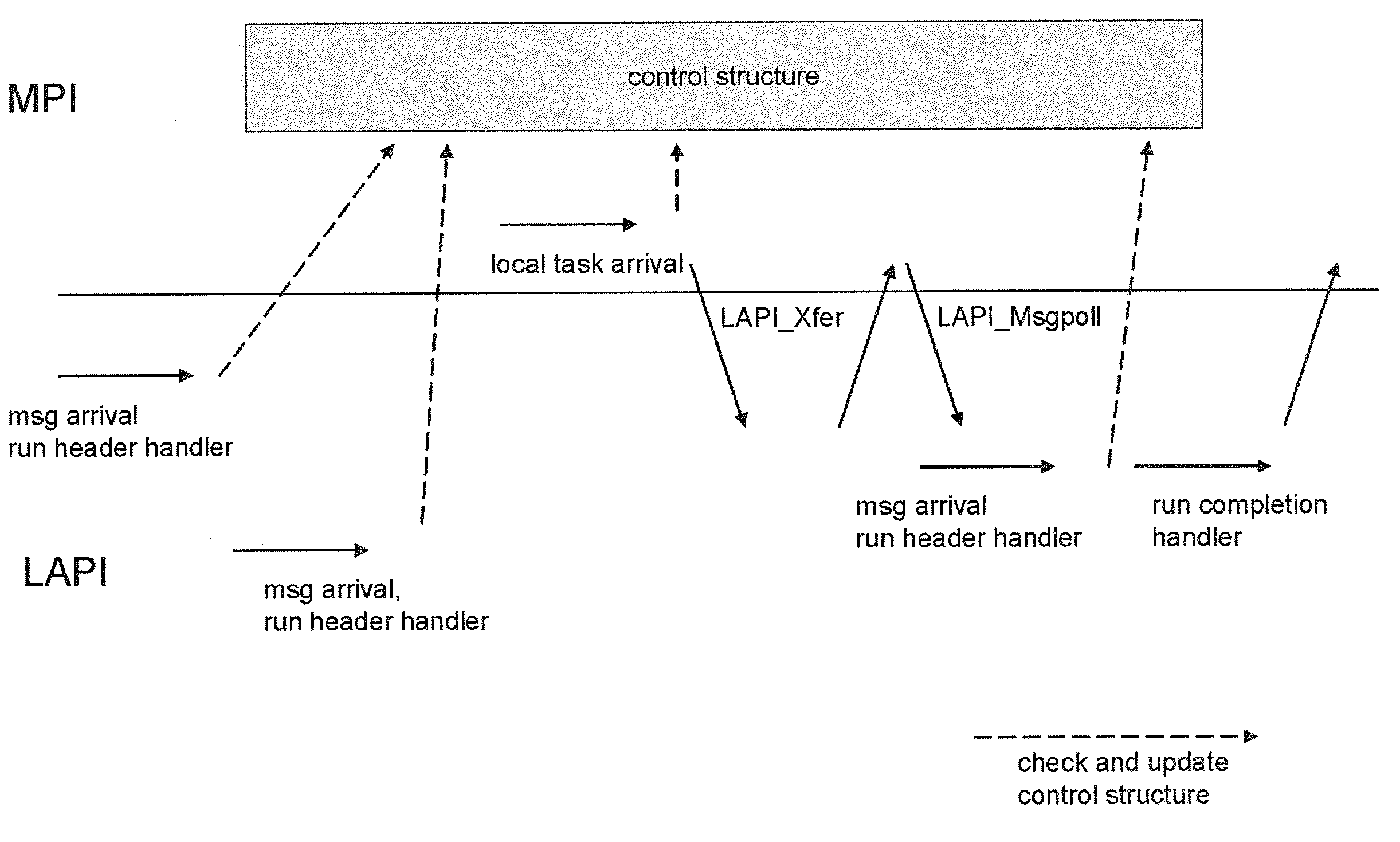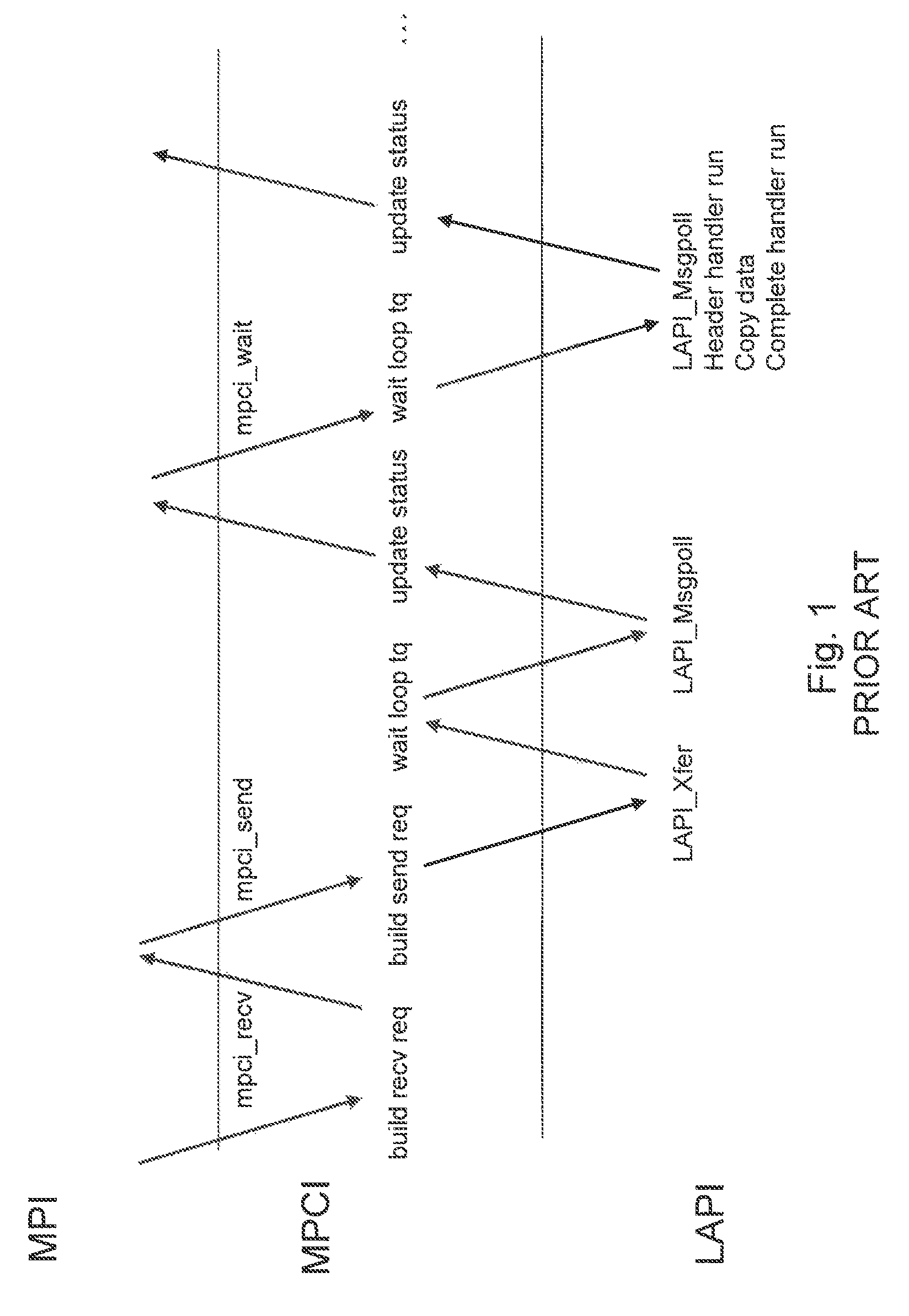Reducing layering overhead in collective communication operations
a technology of collective communication and overhead, applied in the field of collective communication operations in a multi-node data processing system, can solve the problems of locking overhead in a threaded environment, interfaces provided by a two-sided, point-to-point communication lower layer, performance issues of layered approach, etc., to achieve the effect of improving collective communication performance, and reducing protocol layering overhead
- Summary
- Abstract
- Description
- Claims
- Application Information
AI Technical Summary
Benefits of technology
Problems solved by technology
Method used
Image
Examples
Embodiment Construction
[0029]FIG. 1 illustrates a different approach to the problem of message transfer between tasks. In the approach shown the transfer involves the use of an intermediate layer, the Message Passing Client Interface (MPCI). This approach involves the use of three layers: the MPI, the MPCI and the LAPI layer. As is seen, the approach shown involves multiple interlayer communications and transfers. Not only that, it is seen that the use of multiple layers also involves periods of operation where tasks in the MPCI layer employ wait loops. The method of the present invention eliminates the need for a three layered structure. Instead, the method of the present invention employs a control structure which is specifically designed to eliminate the need for an intermediary communication layer by providing structures and variables which are tailored to the situation in which the communication operation is being invoked as the result of a collective operation.
[0030]In order to provide the best desc...
PUM
 Login to View More
Login to View More Abstract
Description
Claims
Application Information
 Login to View More
Login to View More - R&D
- Intellectual Property
- Life Sciences
- Materials
- Tech Scout
- Unparalleled Data Quality
- Higher Quality Content
- 60% Fewer Hallucinations
Browse by: Latest US Patents, China's latest patents, Technical Efficacy Thesaurus, Application Domain, Technology Topic, Popular Technical Reports.
© 2025 PatSnap. All rights reserved.Legal|Privacy policy|Modern Slavery Act Transparency Statement|Sitemap|About US| Contact US: help@patsnap.com



